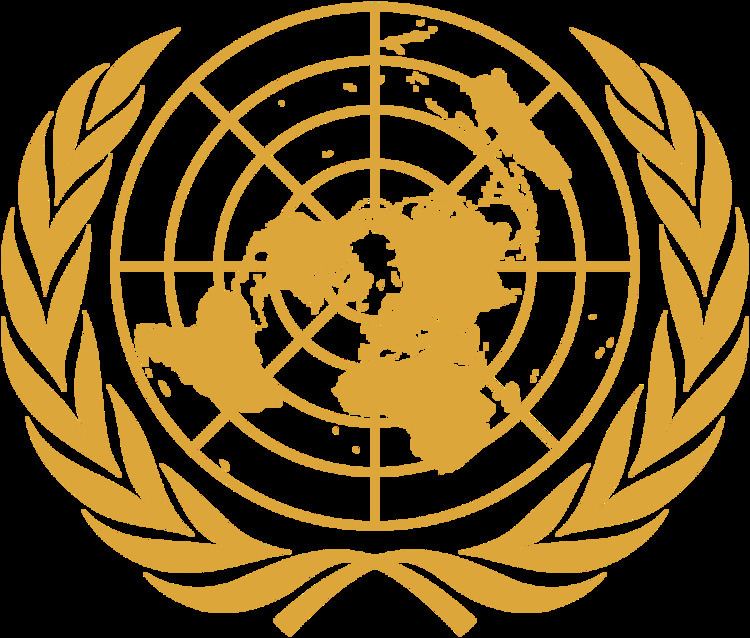Formation 31 July 2007 Legal status Active | Website unamid.unmissions.org | |
 | ||
Parent organization UN Security Council / African Union | ||
The United Nations–African Union Mission in Darfur (UNAMID) is a joint African Union (AU) and United Nations (UN) peacekeeping mission formally approved by United Nations Security Council Resolution 1769 on 31 July 2007, to bring stability to the war-torn Darfur region of Sudan while peace talks on a final settlement continue.
Contents
- Authorisation
- Leadership and Command
- Sectors
- Major Units
- Participants
- Former contributors
- Casualties
- Incidents
- References
Its initial 12-month mandate was extended to 31 July 2010. As of 2008, its budget was approximately US $106 million per month. Its force of about 26,000 personnel began to deploy to the region in October 2007. The 9,000-strong African Union Mission in Sudan (AMIS), which was previously responsible for peacekeeping, had completely merged into this new force by 31 December 2007.
The mandate is for a force of up to 19,555 military personnel and 3,772 police, along with a further "19 formed police units comprising up to 140 personnel each." The peacekeepers are allowed to use force to protect civilians and humanitarian operations. UNAMID is the first joint UN/AU force and the largest peacekeeping mission.
As of December 2008, it had deployed 15,136 total uniformed personnel, including 12,194 troops, 175 military observers, and 2,767 police officers, who were supported by 786 international civilian personnel, 1,405 local civilian staff, and 266 UN volunteers.
Authorisation
Initial authorization for the mission was given by the UN Security Council in resolution 1769 of 31 July 2007. This resolution set the strength of the mission as "... up to 19,555 military personnel, including 360 military observers and liaison officers, and an appropriate civilian component including up to 3,772 police personnel and 19 formed police units comprising up to 140 personnel each". The mission's authorisation was extended in essentially unchanged form for each of the following five years: UN Security Council resolution 1828 adopted on 31 July 2008, resolution 1881 on 30 July 2009, resolution 1935 on 30 July 2010, resolution 2003 on 29 July 2011, and resolution 2063 adopted on 31 July 2012.
Security Council resolution 2113 of 30 July 2013 extended the mandate of UNAMID for 13 months - to 31 August 2014 - but reduced the permitted force strength to 16,200 military personnel, 2,310 police personnel and 17 formed police units of up to 140 personnel. The following year saw the mandate extended once again to 30 June 2015 (Security Council resolution 2173 of 27 August 2014).
Security Council resolution 2228 of 29 June 2015 further reduced the force strength, to no more than 15,845 military personnel, 1,583 police personnel and 13 formed police units of up to 140 personnel each. This remains the authorised strength following the latest extension of the mission's mandate through Security Council resolution 2296 of 29 June 2016.
Leadership and Command
United Nations' missions come under a civilian Head of Mission, usually called the Special Representative of the UN Secretary General. UNAMID, as a joint mission, has a civilian head appointed by both the UN and AU. In October 2015 Martin Ihoeghian Uhomoibhi (of Nigeria) was appointed as Joint Special Representative for Darfur and Head of UNAMID, succeeding Abiodun Oluremi Bashua (also of Nigeria).
Sectors
The preceding African Union Mission in Sudan (AMIS) was organised in a number of Sectors, each under the command of a Colonel. When UNAMID took over from AMIS some of these sectors were merged and Sectors became Brigadier's commands. Initially the Force was divided into three Sectors:
By mid-2015 a further two Sectors had been established:
Major Units
A UNAMID map showing force deployment in December 2016 reveals the force comprised 14 infantry battalions (in addition to engineer, signals, medical and other support units). These battalions were deployed as follows:
Sector North
Sector West
Sector Central
Sector South
Sector East
Participants
On 12 August 2007, Alpha Oumar Konare, chairman of the AU, announced that UNAMID was likely to be an all-African peacekeeping force. As of 30 June 2013, the total number of personnel in the mission was 19,735:
Former contributors
Casualties
As of 31 October 2016, 236 UN personnel had died whilst serving with UNAMID.
